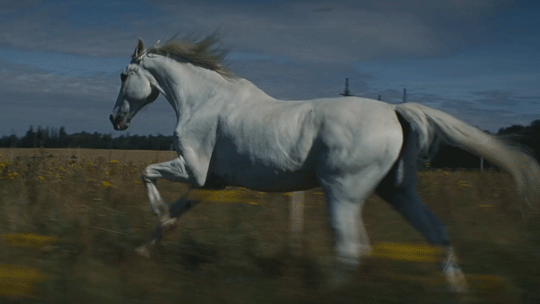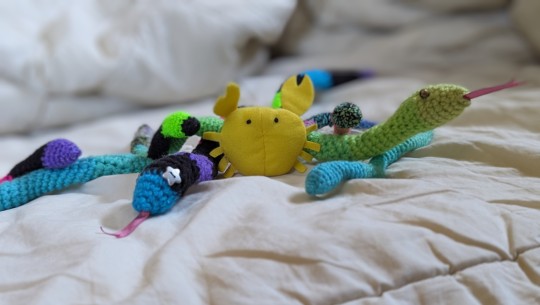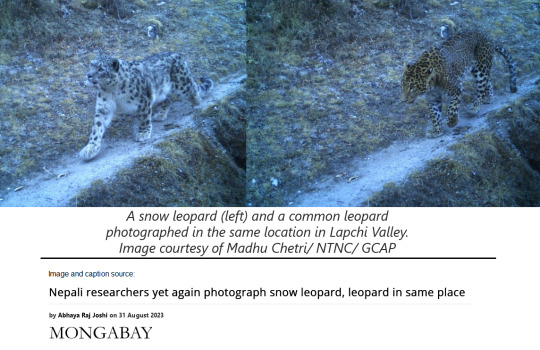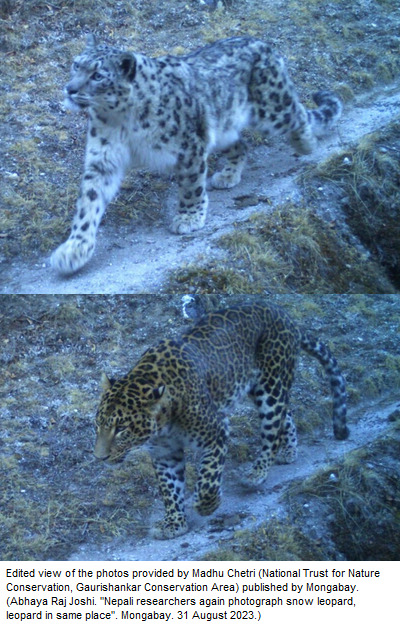#paleo landscape
Explore tagged Tumblr posts
Text

Double-Crested Hunter
#dilophosaurus#paleo art#dinosaur art#dino#dino art#dinosaur#paleo#landscape#digital painting#painting#art#my art#artblr#artist on tumblr
7K notes
·
View notes
Text


Gidelim buradan koş enis koş. kaçıp gidelim bu çağdan zira bu toprak seni de beni de bağrımızdan yutar..
#photography#yörüngede#artists on tumblr#cottagecore#my photography#landscape#aesthetic#popular#travel#mecharex makes art#creature design#character design#artwork#art#digital art#digital artist#animation#paleoart#paleo#paleolithic#horse#cave art#clip studio paint#animated gif#animal#pony#snow#winter#my gif#smolla_horses
2K notes
·
View notes
Text
#nature#landscape#paradise#artists on tumblr#cottagecore#yörüngede#motivación#aethestic#popular#travel#my photgraphy#mecharex maces art#creature design#character design#artwork#art#artcore#digital art#digital aritst#animation#paleoart#paleo#iced coffee#show#my video#natural beauty#currently reading#current reality#sky#up
688 notes
·
View notes
Text
Because tuatara are very long lived - between 100 and 200 years by most estimates […] - the founding of Aotearoa/New Zealand as a modern nation and the unfolding of settler-wrought changes to its environment have transpired over the course of the lives of perhaps just two tuatara [...].
---
[T]he tuatara (Sphenodon punctatus) [...] [is] the sole surviving representative of an order of reptiles that pre-dates the dinosaurs. [...] [T]he tuatara is of immense global and local significance and its story is pre-eminently one of deep timescales, of life-in-place [...]. Epithets abound for the unique and ancient biodiversity found in Aotearoa/New Zealand. Prized as “Ghosts of Gondwana” (Gibbs 2008), or as denizens of “Moa’s Ark” (Bellamy et al. 1990) or “The Southern Ark” (Andrews 1986), the country’s faunal species invoke fascination and inspire strong language [...]. In rounded terms, it [has been] [...] just 250 years since James Cook made landfall; just 200 years since the founding of the handful of [...] settlements that instigated agricultural transformation of the land [...]. European newcomers [...] were disconcerted by the biota [...]: the country was seen to “lack” terrestrial mammals; many of its birds were flightless and/or songless; its bats crawled through leaf-litter; its penguins inhabited forests; its parrots were mountain-dwellers; its frogs laid eggs that hatched miniature frogs rather than tadpoles [...].
---
Despite having met a reassuringly temperate climate [mild, oceanic, comparable to western Europe], too, the newcomers nevertheless sought to make adjustments to that climate, and it was clear to them that profits beckoned. Surveying the towering lowland forests from the deck of HMS Endeavour in 1769, and perceiving scope for expansion of the fenland drainage schemes being undertaken at that time in England and across swathes of Europe, Joseph Banks [botanist on Cook's voyage] reported on “swamps which might doubtless Easily be drained” [...]. Almost a century later, in New Zealand or Zealandia, the Britain of the South, [...] Hursthouse offered a fuller explication of this ethos: The cultivation of a new country materially improves its climate. Damp and dripping forests, exhaling pestilent vapours from rank and rotten vegetation, fall before the axe [...]. Fen and march and swamp, the bittern’s dank domain, fertile only in miasma, are drained; and the plough converts them into wholesome plains of fruit, and grain, and grass. [...]
[The British administrators] duly set about felling the ancient forests of Aotearoa/New Zealand, draining the country’s swamps [...]. They also began importing and acclimatising a vast array of exotic (predominantly northern-world) species [sheep, cattle, rodents, weasels, cats, crops, English pasture grasses, etc.] [...]. [T]hey constructed the seemingly ordinary agronomic patchwork of Aotearoa/New Zealand's productive, workaday landscapes [...]. This is effected through and/or accompanied by drastic deforestation, alteration of the water table and the flow of waterways, displacement and decline of endemic species, re-organisation of predation chains and pollination sequences and so on [...]. Aotearoa/New Zealand was founded in and through climate crisis [...]. Climate crisis is not a disastrous event waiting to happen in the future in this part of the world; rather, it has been with us for two centuries already [...].
---
[T]he crest formed by the twinned themes of absence and exceptionalism [...] has shaped this creature's niche in the western imagination. As one of the very oldest species on earth, tuatara have come to be recognised [in Euro-American scientific schemas] [...] as an evolutionary and biodiversity treasure [...]. In 1867, [...] Gunther [...] pronounced that it was not a lizard at all [...] [and] placed the tuatara [...] in a new order, Rhynchocephalia, [...] igniting a frenzy of scientific interest worldwide. Specifically, the tuatara was seen to afford opportunities for "astonished witnessing" [...], for "the excitement of having the chance to see, to study, to observe a true saurian of Mesozoic times in the flesh, still living, but only on this tiny speck of the earth [...], while all its ancestors [...] died about one hundred and thirty-five million years ago" [...]. Tuatara have, however, long held special status as a taonga or treasured species in Māori epistemologies, featuring in a range of [...] stories where [...] [they] are described by different climates and archaeologies of knowledge [...] (see Waitangi Tribunal 2011, p. 134). [...]
While unconfirmed sightings in the Wellington district were reported in the nineteenth century, tuatara currently survive only in actively managed - that is, monitored and pest-controlled - areas on scattered offshore islands, as well as in mainland zoo and sanctuary populations. As this confinement suggests, tuatara are functionally “extinct” in almost all of their former wild ranges. [...] [Italicized text in the heading of this post originally situated here in Boswell's article.] [...] In the remaining areas of Aotearoa/New Zealand where this species does now live [...], tuatara may in some cases be the oldest living inhabitants. Yet [...] if the tuatara is a creature of long memory, this memory is at risk of elimination or erasure. [...] [T]uatara expose and complicate the [...] machineries of public memory [...] and attendant environmental ideologies and management paradigms [...].
---
All text above by: Anna Boswell. "Climates of Change: A Tuatara's-Eye View". Humanities, 2020, Volume 9, Issue 2, 38. Published 1 May 2020. This article belongs to the Special Issue Environmental Humanities Approaches to Climate Change. [Bold emphasis and some paragraph breaks/contractions added by me. Text within brackets added by me for clarity. The first paragraph/heading in this post, with text in italics, are also the words of Boswell from this same article. Presented here for commentary, teaching, criticism purposes.]
#i posted commentary about this article in 2020 right after it was first published but i did a sloppy job presenting and discussing it#some might be familiar with boswells 2015 article on longfin eels or her article the stoat free state on weasels in aotearoa#basically she writes on british imperial environmental imaginaries#how settlement tries to reshape a colonys landscape in idealized english image of domesticated home replacing native species with introduce#ecology#abolition#imperial#colonial#landscape#paleo#aotearoa#indigenous#multispecies
75 notes
·
View notes
Text




SL パレオエクスプレス 秩父鉄道 2024.6.1 三峰口駅構内で小休止 製作80周年を記念して門鉄デフ装備
#steam locomotive#railway#landscape#photography#SL PALEO EXPRESS#chichibu railway#蒸気機関車#鉄道写真#秩父鉄道#パレオエクスプレス#三峰口#門鉄デフ
17 notes
·
View notes
Text
Walking in the Elliot Formation Drawing
My Drawing for my next painting: Walking in the Elliot Formation

View On WordPress
#adobe photoshop#Africa#artistatwork#Commissions Open#Concept Art#Digital Art#digital drawing#DigitalPainting#dinosaur#dinosaurs#Environment Design#Jurassic#Jurassic Period#landscape#Lesotho#native african#paleo art#paleontology#South Africa#Wacom Tablet#Workinprogress#zulu#zulu tribe#zulu warrior
10 notes
·
View notes
Text










Mesa Verde National Park (No. 4)
Large Pueblo I settlements laid claim to the resources found within 15 to 30 square miles (39 to 78 km2). They were typically organized in groups of at least three and spaced about 1 mile (1.6 km) apart. By 860, there were approximately 8,000 people living in Mesa Verde. Within the plazas of larger villages, the Pueblo I people dug massive pit structures of 800 square feet (74 m2) that became central gathering places. These structures represent early architectural expressions of what would eventually develop into the Pueblo II Eragreat houses of Chaco Canyon. Despite robust growth during the early and mid-9th century, unpredictable rainfall and periodic drought led to a dramatic reversal of settlement trends in the area. Many late Pueblo I villages were abandoned after less than forty years of occupation, and by 880 Mesa Verde's population was in steady decline. The beginning of the 10th century saw widespread depopulation of the region, as people emigrated south of the San Juan River to Chaco Canyon in search of reliable rains for farming. As Pueblonians migrated south, to where many of their ancestors had emigrated two hundred years before, the influence of Chaco Canyon grew, and by 950 Chaco had supplanted Mesa Verde as the region's cultural center.
Source: Wikipedia
#Utah Juniper#cactus#flora#travel#original photography#vacation#tourist attraction#landmark#architecture#landscape#ancestral puebloan archaeological site#UNESCO World Heritage Site#Paleo-Americans#Mountain West Region#Native American history#Montezuma County#Mesa Verde National Park#Colorado#Banana Yucca#summer 2022
11 notes
·
View notes
Text
Landscape study with some paleo stuff for flavor

2 notes
·
View notes
Text

Seaside Study //clip studio
6 notes
·
View notes
Text
like! look at this!!






oooooohhhhh i want to live in the paleo pines desert so baaaad!!
5 notes
·
View notes
Text
Dino Journal: Sarcosuchus!


[Sarcosuchus in Ariacotta Canyon. Eyes closed head turned up]
SARCOSUCHUS
(sar-co-sook-us)
Sarcosuchus is a playful and cheeky creature that thrives with friends in warm environments near water. With their sturdy build, this crocodyliform can help smash through any obstacle making them the perfect steed to navigate sweeping landscapes.
Befriend a Sarcosuchus in Paleo Pines- available on PC, Switch, PlayStation and Xbox!
49 notes
·
View notes
Text

Pool Day
Cooling off for the summer~
Art Prints | RedBubble Shop
#spinosaurus#dino art#paleoart#paleo art#dinosaurs#dinosaur#prehistoric#landscape#artblr#artist on tumblr
5K notes
·
View notes
Photo

Map of known Paleo-European languages, including substrate languages.
The Paleo-European languages are the mostly unknown languages that were spoken in Europe prior to the spread of the Indo-European and Uralic families caused by the Bronze Age invasion from the Eurasian steppe of pastoralists whose descendant languages dominate the continent today. Today, the vast majority of European populations speak Indo-European languages, but until the Bronze Age, it was the opposite, with Paleo-European languages of non-Indo-European affiliation dominating the linguistic landscape of Europe.
283 notes
·
View notes
Text
Thoughts on Crab Day

I support this idea and I'll be participating on July 29th.
I see a lot of folks saying things to the effect of, "don't reward Tumblr for making things worse/not listening to their userbase/not adding features I need-want-like." I also see a lot of posts saying that the organizers of Crab Day are TERFs, neo-Nazis, and/or ultraconservatives.
While I agree that TERFs and Nazis (neo and paleo) need to be yote into the sun, whoever started this idea was not wrong about the site needing money to continue operating. Tumblr is a business. That's how businesses work.
Now, they can get money from advertisers and monetization partners, or they can get it from users. If they get it from advertisers/investors, those parties have the opportunity to weigh in on features they think will generate more revenue... like Tumblr Live... which is objectively trash. Tumblr Live is powered by LiveBox, an add-on service provider that enables sites to host live streaming content to generate revenue. Tumblr is also trying to attract users from the X-Twitter exodus by making the interface more familiar to these users. Was this a bad idea? Yes. It's a desperate attempt to attract more users so as to increase ad views and generate more revenue. But, remember, Tumblr is a business. That's how businesses work.
For YOU (and me!), Tumblr is a community. It's a platform for our art. It's a meeting place for friends and like-minded individuals. It's a safe space for self-expression. It's the last mostly-unmonetized bastion of social media in a landscape dominated by influencers, hustlers, and data-miners. For TUMBLR STAFF, Tumblr is a service that they are trying to sell so that they can obtain money that they can then exchange for food, housing, repayment of student loans, etc. If they can't afford those things by selling you their services, then they will literally go do something else. Yes, Tumblr is indeed a business and not just a passion project. That's how businesses work.
So by buying things directly from Tumblr, like a $3 crab-summoning gift, and especially as part of a coordinated effort like Crab Day and/or Crab Week, you are telling Tumblr Staff that YOU are a CUSTOMER, not just a monetizable data point. We are, in a very distant sense, establishing ourselves as a body of influence. If Tumblr sees that we can and will do this en masse, they are more likely to treat us as contributors and potentially shareholders who need to be kept happy. We each have a vested interest in the continuation of this site, and we have a rare opportunity to show the specific value of that interest.
Also, for those who want more accessibility tools, this is a great way to get those implemented. Accessibility for web applications is a big, big business and toolkits and training for accessibility standards tend to cost quite a lot. Training for a single accessibility plug-in toolkit can cost around $2000 per user*. That's about 667 crabs. By participating in Crab Day, even just a little bit or even just spreading the word about it or even just allowing others to participate as they please without pitching a ragequit tanty about it, you can tell Tumblr staff that you're here as a customer, your voice needs to be heard, and your needs are important.
If this doesn't work, and Tumblr doesn't take their userbase seriously after we make a concerted effort to support them, then please by all means go back to whatever version of complaining makes you feel most satisfied. But just for now, let's try something new!
*based on actual costs of a web accessibility training program offered by the agency for which I work
#text post#long post#technically not snakes#technically not snakes and I'm very sorry.#crab day 2023#crab day#save this hellsite#july 29#save tumblr#crab week#not snakes
123 notes
·
View notes
Text


Nepali researchers have yet again photographed a snow leopard (Panthera uncia) and common leopard (P. pardus) in the same location in the lap of Mount Gaurishankar in the eastern Himalayas. The recently analyzed images captured in Lapchi Valley at an altitude of 4,260 meters (13,976 feet) above sea level show a snow leopard strolling a human trail [...] on Jan. 4, 2023. A common leopard was photographed by the same camera trap seven days later. “This is the first time that a snow leopard and a common leopard have been photographed in the same location in the Gaurishankar area,” says Madhu Chetri from the National Trust for Nature Conservation, [...] overseeing the Gaurishankar Conservation Area. Conservationists traditionally considered endangered tigers (P. tigris) as the apex predators of Nepal’s southern plains, vulnerable common leopards as roaming the country’s hills, and vulnerable snow leopards as keeping farther north in the mountains. [...] In July 2016, researchers studying [...] [the] Tibetan Plateau for the first time obtained video footage of a snow leopard and a common leopard living in the same area. Similarly, in 2013, a team of Italian researchers analyzing scat samples from Sagarmatha (Mount Everest) National Park also found that snow leopards and common leopards coexist in the same area. [...] Researcher Bikram Shrestha, who has worked on snow leopards, says his team also captured images of both cats in the same area in a survey carried out between 2011 and 2013 in Nepal’s Mustang region at an altitude of 4,500 m (14,764 ft).
---
Images and text excerpt from: Abhaya Raj Joshi. "Nepali researchers again photograph snow leopard, leopard in same place". Mongabay. 31 August 2023. [Images provided to Mongabay by Madhu Chetri, National Trust for Nature Conservation, Gaurishankar Conservation Area.]
218 notes
·
View notes
Text


SLパレオエクスプレス 秩父鉄道 ふかや花園~小前田
#SL PALEO EXPRESS#chichibu railway#蒸気機関車#鉄道写真#秩父鉄道#パレオエクスプレス#三峰口#門鉄デフ#japan#railway#landscape#ふかや花園駅
9 notes
·
View notes